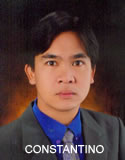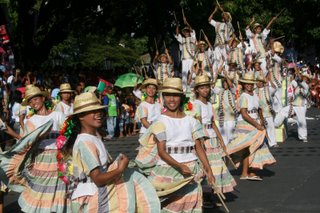|
 Philippine
and Foreign Dances In the Philippine
Secondary Schools Philippine
and Foreign Dances In the Philippine
Secondary Schools
By: Bienvenido Constantino
It’s been a rainy season in the
Philippines, thus, outdoor sports and
team sports such as Baseball and Volleyball
are impossible in Philippine secondary
schools PE programs at the moment. Most
of the Public Schools do not have covered
gyms, so most of them are not enjoying
the outdoor sports, especially those
who are from remote areas. The Philippine
Department of Education (DepEd) has
designed activities other than team
or outdoor sports. Philippine and foreign
folk dances replaced team and outdoor
sports during rainy seasons (June-September).
Dance lessons can be done inside the
classrooms.
Philippine folk dances were getting
popular due to the secondary school
program alternative. It is DepEd’s
aim to promote Philippine Folk Dances
among high school students. In fact,
these dances were used as a mass demonstration
during foundation anniversaries of schools
all over the country. Introducing dances
among high schools is a great idea.
Most of the students had forgotten their
identity as Filipinos because of being
involved in alternative foreign dances
that do not really show authenticity
of one’s identity. However, foreign
dances were also introduced in Philippine
Secondary schools for aesthetic purposes.
The students learned to appreciate other
cultures because of this.
Philippine folkdances are highly influenced
by the Spaniards as many know (Except
Highlands and Muslim areas of Cordillera
and Mindanao). The steps, music, as
well as the costumes are reflective
of the Spanish identity. After more
than 300 years of Spanish
occupation in the Philippines, it
is very easy to see the manifestations
of Europeans in the Filipino culture.
The country is composed of more than
7,000 islands, and each province in
every region shows a different culture,
which practices different dances. Philippine
folkdances can be classified into six
different types. They are:
- Occupational dances
- Courtship dances
- War dances
- Social dances
- Festival dances
- Derivative or Imitative dances
from animals
PHILIPPINE FOLKDANCES
The following are some of the Philippine
folkdances that define cultures of the
Filipinos.
 |
- Batê:
Bate is a festival dance from
Parañaque
and Rizal,
Philippines. The word means
“Beat”. The beating
movement is done with the use
of the flag. The dance is performed
during the procession on Easter
Sunday.
- Binatbatan:
(video)
Occupational dance from Ilocos
Norte. The dance shows the
usual occupation of the people
of Paoay,
such as harvesting cotton. Binatbatan
is derived from the word “Batbat”
which means, stick.
- Innalisan:
A festival dance from Nangalisan,
Laoag
Ilocos Norte. The word Innalisan
is derived from “Innalis,”
which means to transfer from
one place to another, one of
the characteristics of the Ilocanos.
- Jota Bicolana:
A social dance from the Bicol
region. Spanish influence is
evident in this dance. It depicts
the gay and lively life of the
Filipinos.
- Jota Cabangan:
(video)
Courtship dance performed by
the bride and the groom at a
“Sinadag,” a feast
on the eve of the wedding day.
- Polka Antigo:
The word Antigo means “antique”
or old. This is an old Philippine
ballroom dance with polka as
its basic steps. It is a social
dances performed during olden
times in the country.
|
Dances have been a part of every nation’s
culture to depict its identity. It is
fun to promote fitness through dances.
The editor of this article is willing
to send the complete steps of each dance
stated, and the music scores for the
Piano intended for each dance for FREE
(maximum of 2). The request will be
sent through e-mail. The requester should
be a foreign PE
teacher/instructor and a regular reader
of pelinks4u. The dance
steps and scores are not intended for
collections, but for applications. Send
the following information to receive
your free Philippine Folkdance copy.
Name:
School Affiliation:
Position:
Address of the school:
Personal E-mail (where your
copy will be sent):
Send your request by contacting the
editor through e-mail
Bien Constantino, Jr.
Bien_wayne@yahoo.com
resources: Philippine
Dances, Philippine
Dance, dance
photo gallery, Culture
of the Philippines
(pelinks4u
home) |



